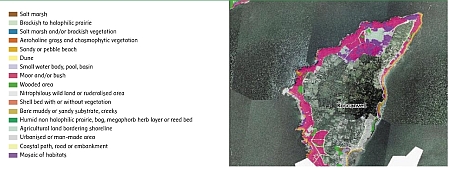Supplement 2.12: Impact of Oil on Marine Flora and Fauna (3/3)
Indirect effects
Marine plants and animals do not live in isolation from each other. They develop in an environment teeming with a wide variety of biological interaction. This interaction goes from predator/prey relationships to situations of dependence, symbiosis, parasitism and other situations in which an organism or group of organisms provides a shelter or another necessity for one or several species in the community.
Members of all the groups of organisms - algae, bacteria, invertebrates, fish, birds, mammals - can be affected by an oil spill. All damages caused by oil to individuals of a group may lead to changes in the structure and functioning of the biological community.
Four broad types of indirect effects can be distinguished:
- Death by starvation of organisms whose usual
source of food is polluted, and where alternative
food supplies are not available
- Disturbance of certain interactions between
species, due to the elimination or reduction of
certain species
- large-scale proliferation of organisms which prey
on the food usually consumed by other species
present in the environment
- Modification of habitats due to the loss of key
species, such as seagrasses or mangroves, or the
impacts of clean-up operations, such as the alteration
or disappearance of the substrate.
All these effects are temporary. After the imbalance caused by the pollution, then the proliferation of resistant, recolonising organisms, the former balance is gradually restored, except if new pollution arrives. However, this return to normal can take years.
Reference condition
The contamination of the environment and the ecological impact of pollution can only be fully appreciated when compared to reference values providing an accurate representation of the situation before the accident. The creation of reference conditions is the only way of demonstrating the causal relationship between the spill of pollutant and the effects subsequently observed. This implies that the information provided by these reference conditions must be coherent with the particular needs of the ecological follow-up, in order to provide an objective impact report.

